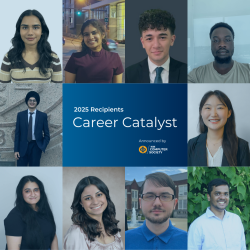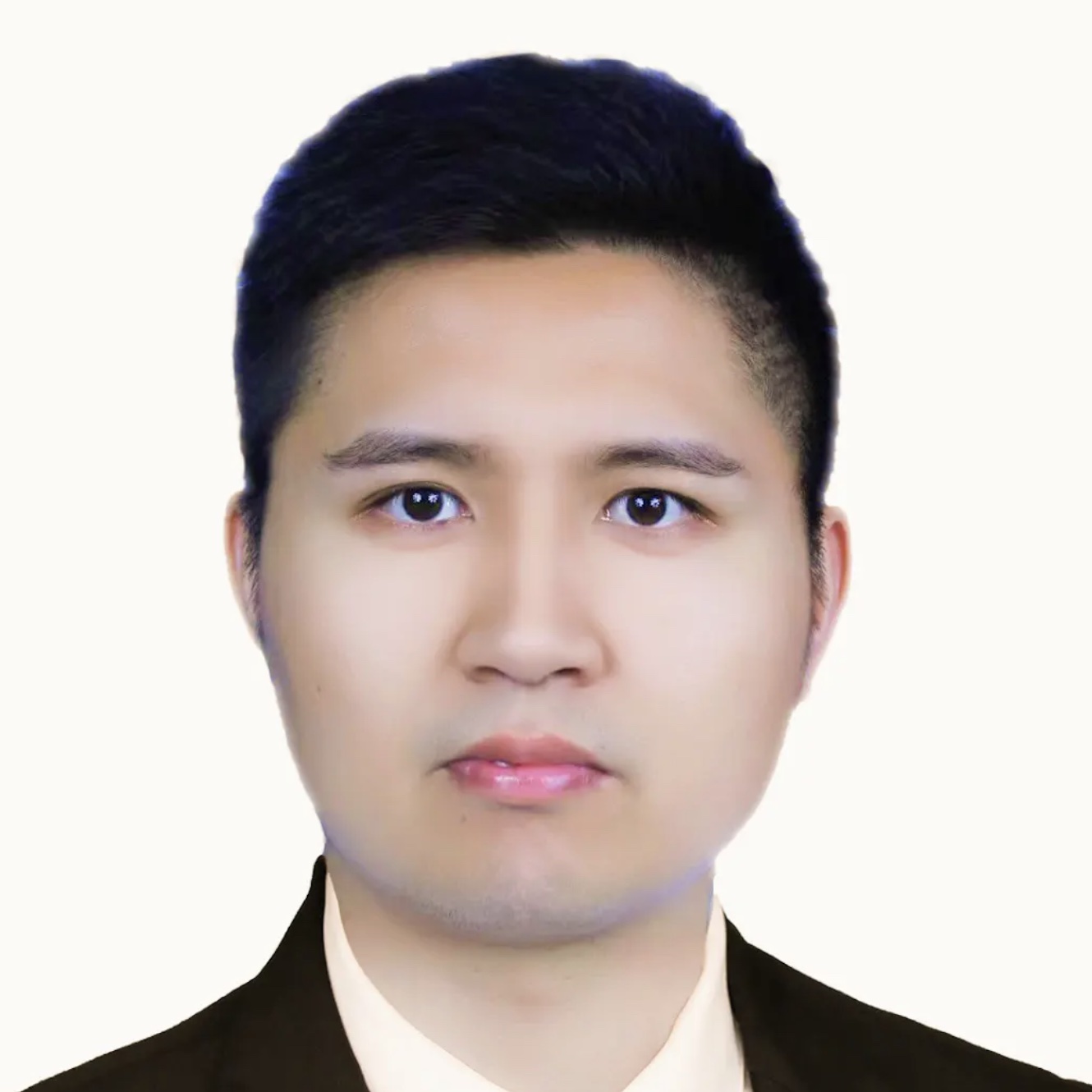Computing’s Top 30: Nirmalya Thakur

From tackling the spread of COVID-19 misinformation on social media to his award-winning research on fall detection and indoor localization for ambient assisted living, Nirmalya Thakur actively engages with issues of critical importance to humans and their well-being.
Residing at the intersection of various fields–including big data, HCI, machine learning, and natural language processing–Thakur’s groundbreaking research is fueled by interaction data from daily human activities.
Whether those activities are trolling social media or attempting to navigate a room, his aim is relatively consistent: to reduce challenges related to individual well-being, public health, and community engagement.
Currently, Thakur is an assistant professor in the South Dakota School of Mines and Technology’s Department of Electrical Engineering and Computer Science. He is also one of Computing’s Top 30 Early Career Professionals of 2024.
In the following Q&A, Thakur discusses
- Which of the many AI emerging trends he’s most excited about
- What he did after finding that the k-Nearest Neighbors (k-NN) classifier consistently outperformed all other algorithms on overall accuracy for developing fall detection systems
- His keynote addresses on the gap between advanced AI research and its real-world applications
- How his recent projects on the spread of COVID-19-related information on social media can support data-driven strategies to reduce conspiracy theories and other misinformation in public health communications
- Why he sees his “behind the scenes” work in professional organizations and on editorial boards as a vitally important part of his contributions to the research community
You have received numerous awards, including Young Scientist, Excellent Researcher, and Young Innovator. Can you share the key projects or research that led to these recognitions, and how they have influenced your career?
These recognitions were based on my work on two interrelated research projects focused on fall detection and indoor localization for ambient assisted living, which led to multiple scientific contributions in these fields. The first project resulted in a paper titled “A Study of Fall Detection in Assisted Living: Identifying and Improving the Optimal Machine Learning Method,” published in Journal of Sensor and Actuator Networks. This work involved a comprehensive comparative analysis of 19 different machine learning algorithms—applied across two real-world datasets—to determine the most optimal machine learning algorithm for developing fall detection systems. The results showed that the k-Nearest Neighbors (k-NN) classifier consistently outperformed all other algorithms in terms of overall accuracy. Building on this finding, we introduced a new fall detection framework capable of distinguishing between actual falls and fall-like motions, addressing a key limitation in many binary classifier-based systems.
To further enhance system performance, we integrated a k-fold cross-validation approach with the AdaBoost algorithm, which substantially improved the classification results of the k-NN-based framework. When evaluated on the two datasets, this improved system achieved fall detection accuracies of 99.87% and 99.66%, respectively, outperforming all prior works in this field at the time of the paper’s publication. In addition to detecting falls and fall-like events, the framework also included a mechanism to identify whether a fall was followed by a “long lie,” a critical risk factor for serious health complications in older adults. The findings of this paper were featured in Business Insider for its role in advancing high-accuracy, real-world fall detection systems within the broader domain of ambient assisted living.
The second project led to a paper titled “Multimodal Approaches for Indoor Localization for Ambient Assisted Living in Smart Homes,” published in Journal of Information. This study addressed the critical challenge of accurately determining indoor location in smart home environments to support ambient assisted living. The work proposed and evaluated three different approaches for indoor localization, each leveraging multimodal sensor data to enhance system performance and practical deployment potential.
The first approach introduced a big-data-driven methodology that utilized Bluetooth Low Energy (BLE) beacons and scanners to detect a user’s location in terms of activity-based zones during Activities of Daily Living (ADLs). By analyzing BLE signal strength in combination with behavioral data, this method classified the user’s zone-based location with an accuracy of 81.36%, demonstrating the potential for scalable BLE-based systems in real-world settings. The second approach presented a context-independent technique that interpreted accelerometer and gyroscope data to classify the user’s zone-level location without requiring environment-specific contextual input. This increased the model’s generalizability across different Internet of Things (IoT)-based settings. This method achieved an accuracy of 81.13%, further validating the utility of motion-sensor data for adaptive indoor localization. The third approach focused on coordinate-based indoor localization, aiming to estimate the precise spatial coordinates of a user’s location within an indoor environment. This approach was evaluated using Root Mean Squared Error (RMSE)—a key performance metric defined in ISO/IEC 18305:2016, the international standard for testing localization and tracking systems. The proposed technique outperformed existing methods in terms of RMSE at the time of the paper’s publication, indicating superior accuracy and reliability for fine-grained indoor positioning.
In addition to the technical contributions, this study offered practical insights for developing intelligent, sensor-integrated localization systems for smart environments. The paper was recognized as an Editor’s Choice article by Journal of Information, and its findings were featured in Yahoo News for their significance in advancing state-of-the-art ambient assisted living technologies.
These two projects led to the development of a third system focused on real-world deployment, which led to a paper titled “A Simplistic and Cost-Effective Design for Real-World Development of an Ambient Assisted Living System for Fall Detection and Indoor Localization: Proof-of-Concept,” published in Journal of Information. This work addressed key barriers to the large-scale implementation of ambient assisted living systems, such as high cost, hardware complexity, and limited integration between functionalities. The system proposed in this study was designed to perform both fall detection and indoor localization simultaneously, using a unified software and hardware architecture that eliminated the need for proprietary components or custom-built sensors. The design leveraged commercially available, low-cost hardware and a streamlined software stack, making it feasible for deployment in real-world smart home settings. Proof-of-concept testing demonstrated that the system could accurately capture multimodal components of user behavior associated with ADLs and effectively detect falls while determining the user’s indoor location in real time.
Two comparative studies were conducted to contextualize the system within the existing body of research. The first demonstrated that the proposed solution outperformed existing systems at the time in terms of software architecture and hardware design efficiency. The second showed that, among real-world ambient assisted living systems capable of performing both fall detection and indoor localization, it had the lowest development cost at the time of publication. Building on the contributions of the earlier two papers, this work introduced a unified, cost-effective system designed for real-world deployment. Collectively, these three studies focused on advancing ambient intelligence in smart home environments to support healthy aging and independent living among older adults.
You have delivered keynotes at several prestigious conferences, including ICITSC, ISHC, ISAIC, ICEBEHI, ICMLCA, and ICCVDM. What messages do you aim to convey in your talks, and how do you engage your audience?
In my conference keynotes, I have focused on bridging the gap between advanced AI research and its real-world applications in areas such as ambient intelligence, assistive technologies, and digital public health. A recurring theme in my presentations is the integration of AI with human-centered design—particularly in the context of aging populations and smart environments. I discuss how AI-driven systems can support independent living through adaptive, context-aware technologies that respond to users’ behavioral patterns and evolving needs.
Another area I emphasize is the role of explainable AI in ensuring responsible deployment. As AI increasingly supports decision-making in different domains—such as healthcare, public health, and digital platforms that shape societal behavior—I highlight the importance of transparency, interpretability, and user trust in model design and implementation. I encourage audiences to consider not only performance metrics but also usability and ethical alignment when designing intelligent systems.
In addition to these themes, I often include examples from my research in AI and social media analytics to highlight how data-driven methods can be used to understand public reactions during global health events. This area of research allows me to demonstrate how techniques such as sentiment analysis and topic modeling can offer practical insights for public communication and digital governance. These examples help audiences see the broader relevance of AI beyond technical applications and understand its role in addressing real-time societal challenges.
To engage audiences effectively, I adopt a narrative-driven format supported by real-world case studies and visual demonstrations. I also encourage dialogue during and after my talks to foster discussion around broader societal and ethical implications. My aim in each keynote is to present research not only as a technical endeavor but as a way to meaningfully contribute to solving real-world challenges.
As a guest editor, you have led special issues in the Journal of AI, Computation, and Information. What are the emerging trends and topics in these fields that you find most exciting, and why?
In this role, I have been responsible for overseeing the editorial process, coordinating peer review, and ensuring that the contributions align with the thematic scope and quality expectations of each special issue. These roles provided exposure to emerging research directions and evolving priorities in core areas of computer science, particularly in AI, data analysis, and intelligent systems.
One of the most exciting trends I have observed is the rapid integration of AI with human-centered design, particularly in domains like ambient intelligence and assistive technologies. These advancements focus on developing adaptive, context-aware systems that can anticipate and respond to the needs of individuals, particularly the aging population. As the demand for personalized solutions grows, the integration of AI in everyday environments will continue to play a pivotal role in supporting independent living and health monitoring.
Another trend that has gained significant momentum is explainable AI. With the increasing reliance on machine learning models in critical sectors like healthcare, finance, and autonomous systems, the demand for transparency and interpretability in AI models is crucial. This trend is pushing for the development of AI that is not only effective but also accountable and transparent, ensuring trust in decisions made by automated systems.
Social media research has also emerged as a key theme in AI and computational science, particularly in its role in public health. The ability to analyze large-scale social media data provides valuable insights into public sentiment, health trends, and emerging concerns in real time. In the wake of the COVID-19 pandemic and other global health crises, understanding public discourse on platforms like X (formerly Twitter), Facebook, YouTube, Instagram, and TikTok has become essential for monitoring misinformation, public compliance with health guidelines, and the evolution of mental health trends. This trend highlights how AI-powered analytics of social media conversations can support timely, data-driven strategies in health communication and crisis management.
Lastly, I find the intersection of AI and high-performance computing particularly exciting. As computational power increases, AI algorithms are increasingly being used to tackle complex problems in fields like drug discovery, climate modeling, and materials science. The combination of AI with quantum computing is also poised to revolutionize the way we process and analyze large-scale data, opening up new avenues for scientific breakthroughs.
Together, these emerging directions signal a broader shift toward AI systems that are not only technically sophisticated but also aligned with practical, ethical, and societal needs. Developments in human-centered design, explainability, social media analytics, and computational scalability are redefining what it means for AI to be effective in real-world contexts—and I expect these areas to play an increasingly central role in how the field evolves.
Your research has covered a wide range of topics, including human-computer interaction, ambient assisted living, and sentiment analysis. Can you discuss a recent project you worked on and its potential impact on the field?
One of my recent projects focused on analyzing the spread and characteristics of COVID-19-related misinformation on social media platforms, with the broader aim of supporting the development of data-driven strategies to strengthen public health communication and reduce the circulation of conspiracy theories, fake remedies, and false reports. This project led to two peer-reviewed publications: a journal article, “Investigation of the misinformation about COVID-19 on YouTube using topic modeling, sentiment analysis, and language analysis,” published in Journal of Computation, and a conference paper, “Dissemination of misinformation about COVID-19 on TikTok: A multimodal analysis,” presented at the 26th International Conference on Human-Computer Interaction (HCII 2024).
In the first study, we analyzed over 8,000 videos flagged for containing misinformation related to COVID-19. The work resulted in multiple scientific contributions. First, topic modeling of the video descriptions identified four major themes: Promotion and Outreach Efforts, Treatment for COVID-19, Conspiracy Theories Regarding COVID-19, and COVID-19 and Politics. Second, sentiment analysis was conducted for each of these themes. For videos in the Promotion and Outreach Efforts category, 45.8% were neutral, 39.8% were positive, and 14.4% were negative. For the Treatment for COVID-19 category, the sentiment distribution was 38.1% positive, 31.3% neutral, and 30.5% negative. Videos presenting Conspiracy Theories exhibited predominantly positive sentiment (46.9%), while those related to COVID-19 and Politics had a more evenly distributed sentiment: 35.7% positive, 32.9% negative, and 31.4% neutral. Third, we conducted a topic-specific language analysis to identify the languages used across these themes. English was the most widely used language, followed by Spanish, across all four topics. This multilingual aspect underscores the global reach and cultural variability in misinformation dissemination. Fourth, we examined the propagation of these videos on social media platforms such as Facebook and X (formerly Twitter). Videos with English descriptions were shared the most frequently on both platforms. Finally, correlation analysis revealed that the length of the video title had a statistically significant correlation with the number of shares on X and Facebook. This suggests that even minor structural elements—such as how a video is titled—can influence engagement and potential virality across networks.
In the second study, we focused on COVID-19-related misinformation on TikTok. Videos were grouped into three levels based on the extent of misinformation they contained—low, moderate, and high—and were analyzed based on their content and the user accounts posting them. One of the key findings was that male users posted more misinformation-related videos across all categories. In videos containing low levels of misinformation, patients were the most prominent contributors, surpassing healthcare professionals and news outlets. Videos involving moderately misleading information often addressed prevention methods for COVID-19, showing that even health-related advice, when inaccurate or incomplete, can contribute to the spread of misinformation.
Notably, videos with low levels of misinformation received the highest average views, likes, and comments when compared to those containing moderate or high misinformation. This finding underscores the challenge of detecting and countering more subtle forms of misinformation, which may appear less harmful but still influence large audiences.
In summary, these two studies offer a cross-platform perspective on the dynamics of misinformation related to COVID-19, and their potential impacts span multiple domains. The detailed insights into sentiment, language use, user demographics, and engagement metrics can support the development of more targeted public health messaging strategies that are culturally adaptive and social media platform-specific. For social media platforms, the results highlight content attributes and user patterns that can support early-warning systems and improve the granularity of content moderation tools. For researchers and policymakers, these works provide a deeper understanding of how misinformation spreads across platforms with different user bases and content formats.
As an assistant professor at the South Dakota School of Mines and Technology, what do you find most rewarding about teaching and mentoring students?
As an assistant professor, I conduct research in computer science, teach undergraduate and graduate computer science courses, and engage in service to the department, the university, and the broader scientific community. In my courses, I focus on equipping students with a strong foundation in core concepts while emphasizing real-world use cases that illustrate the relevance of the course topics. I find it especially rewarding to see students’ progress from understanding theoretical concepts to successfully applying them to assignments that replicate real-world challenges. Through these assignments, students improve their understanding of course concepts by approaching them from a real-world perspective, gaining insights into how theoretical knowledge translates into practical application.
In my research group, students actively participate in various stages of ongoing projects, ranging from shaping research questions to conducting data analysis and preparing manuscripts. I find mentoring students particularly rewarding when I see them achieve significant milestones, such as co-authoring their first research paper or successfully presenting their research at academic conferences.
Several students I have mentored have co-authored papers at different international conferences, including the 27th HCI International Conference in Gothenburg, Sweden; the 15th Annual Computing and Communication Workshop and Conference in Nevada, United States; the 26th HCI International Conference in Washington, United States; the 12th International Conference on Human Interaction and Emerging Technologies in Venice, Italy; the 25th HCI International Conference in Copenhagen, Denmark; the 5th International Conference on Computer Science and Software Engineering in Guilin, China; and the 7th International Conference on Human Interaction & Emerging Technologies: Artificial Intelligence & Future Applications in Lausanne, Switzerland.
I find these experiences—both in the classroom and through research—highly rewarding, as they highlight the growth and professional development of my students and their readiness to succeed as professionals in the field of computer science.
As a member of various professional organizations and editorial boards, how do you contribute to the broader scientific and engineering communities?
I contribute to the broader scientific and engineering communities through multiple roles. These include reviewing papers for journals and conferences in computer science and engineering, serving on the editorial boards of journals, and participating in the planning processes of international conferences as a Scientific Advisory Board Co-Chair and Technical Program Committee member.
I have reviewed papers for different journals, including IEEE Access; IEEE Systems Journal; Journal of Internet of Things; Journal of Building Engineering; Proceedings of the ACM on Interactive, Mobile, Wearable, and Ubiquitous Technologies; Journal of Future Robot Life; and PLOS One. I have also served as a reviewer for multiple conferences, including the IEEE International Conference on Artificial Intelligence and Computer Applications, ACM/IEEE International Conference on Human-Robot Interaction, the IEEE Symposium on Wireless Technology and Applications, IEEE World AI IoT Congress, IEEE Symposium on Industrial Electronics & Applications, IEEE Global Communications Conference, and the IEEE Virtual Reality Conference.
I am currently serving as a Scientific Advisory Board co-chair for multiple conferences, including the 15th International Conference on Human Interaction & Emerging Technologies, the 13th International Conference on Human Interaction & Emerging Technologies: Artificial Intelligence & Future Applications, and the 4th International Conference on Human Interaction & Emerging Technologies: Future Systems and Artificial Intelligence Applications. I have also served on the Technical Program Committees for multiple conferences, including the IEEE International Conference on Systems, Man, and Cybernetics, the IEEE International Conference on Intelligent Computing and Signal Processing, the IEEE International Conference on Consumer Electronics and Computer Engineering, the IEEE Global Communications Conference, the International Conference on Machine Learning & Applications, and the International Symposium on Artificial Intelligence in Medical Sciences.
I serve on the editorial boards of multiple journals, including PLOS One, Human Factors in Healthcare, Journal of Technology and Disability, Journal of Technology and Healthcare, and the International Journal of Business Intelligence and Data Mining. I have also served as the guest editor of special issues for journals, including Journal of AI, Journal of Computation, and Journal of Information, focusing on timely topics such as social media analysis in public health crises and intelligent systems for elderly care.
Beyond these roles, I am an active member of multiple professional organizations, including IEEE, ACM, Computer Science Teachers Association, and Sigma Xi (nominated).
While much of this work takes place behind the scenes, I view it as an important part of contributing to the research community. Whether reviewing papers, participating in editorial decisions, or helping shape the direction of conference programs, I approach each responsibility with the same rigor and attention to detail that I apply to my own research. These efforts allow me to remain actively engaged with current developments across the field while also supporting the scholarly contributions of others within the broader scientific and engineering communities.
Bio: Nirmalya Thakur
Nirmalya Thakur is an assistant professor in the Department of Electrical Engineering and Computer Science at the South Dakota School of Mines and Technology. He previously worked as an assistant teaching professor of computer science at Emory University. Thakur earned a PhD at the University of Cincinnati, where he received numerous accolades, including the Dean’s Fellowship, the Distinguished Thesis Award, and the Interdisciplinary Research Fellowship.
Thakur’s research lies at the intersection of big data, data analysis, human-computer interaction, machine learning, and natural language processing. His work leverages interaction data from people’s everyday activities—ranging from behavior in smart home environments to public discourse on social media platforms—to investigate challenges related to public health, individual well-being, and community engagement.
His research on smart home environments focuses on the design and development of personalized, adaptive, and reliable assistive technologies to meet the dynamic needs of elderly people and support healthy aging and independent living. These include systems for human activity recognition, user-specific activity recommendation, indoor localization, fall detection, affect recognition, identification of indoor navigational hazards, and early detection of cognitive impairments through behavioral monitoring.
His work on social media platforms focuses on analyses of public discourse to examine emotional expression and patterns of public reaction to major health and societal challenges. He has developed and applied techniques such as sentiment analysis, subjectivity analysis, anxiety detection, toxicity detection, and topic modeling to investigate public discourse related to COVID-19, Mpox, and other globally relevant issues on platforms such as X (formerly Twitter), YouTube, Instagram, and TikTok. These studies contribute to a deeper understanding of how public conversations on social media evolve around critical topics and offer insights that can support data-driven approaches to improving health communication, strengthening public engagement, and guiding the governance of online discourse.
Thakur has published more than 50 peer-reviewed papers in leading journals and conferences, and received several awards, honors, and recognitions for his contributions to computer science. He was co-editor of the two-book series, Human-Computer Interaction and Beyond: Advances Towards Smart and Interconnected Environments (Parts I and II). He is active in the scientific community in various roles, including as an editorial board member on key journals, a Technical Committee Member for 28 international conferences, and a paper reviewer for various journals, including IEEE Access and Journal of Internet of Things.
Dig Deeper
To learn more about Thakur’s work and research,
- View his publications on Google Scholar.
- Read about his work and professional activities on his website.
- Connect with him on LinkedIn.
Each week over the next few months, Tech News will highlight different Top 30 honorees. For a full list, see Computing’s Top 30 Early Career Professionals for 2024.
In addition to Computing’s Top 30, IEEE Computer Society offers many other awards; to read
about the honors and the honorees—and perhaps nominate an impactful professional in your life—visit the IEEE CS Awards page.









